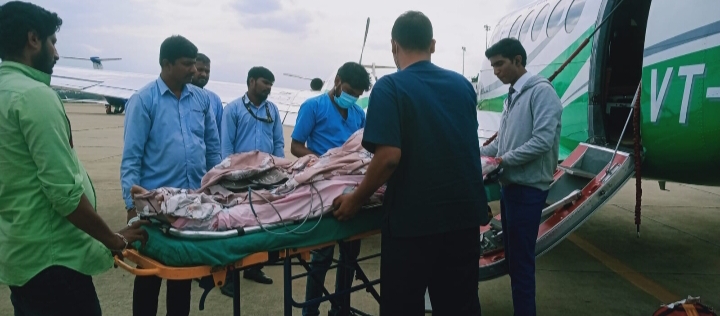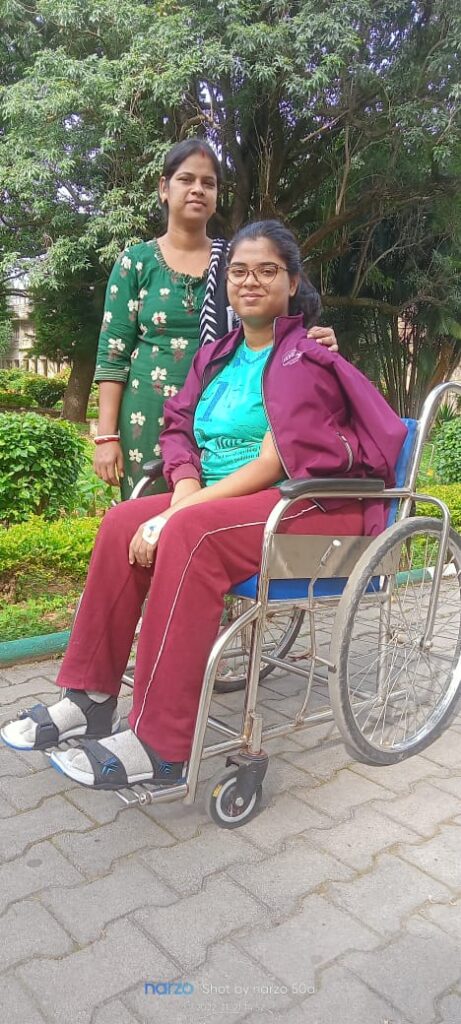
Choose Your Language:
Posted by: The Sumaira Foundation in MOG, Patient, Voices of NMO

In 2022, my life took an unexpected turn. It all began with a high fever that started on August 31st and lasted for a week. At the time, I was preparing for the NEET medical entrance exam, and missing classes felt like a luxury I couldn’t afford. So, I continued attending classes while taking Paracetamol.
Soon after, strange symptoms began to surface. I had difficulty holding my slippers, couldn’t wear jeans properly and felt a burning sensation in my legs and hands. From September 4th, I stopped passing stool but I didn’t think much of it, assuming it was just constipation. Then, on the evening of the 6th, my urination reduced drastically and eventually stopped. That’s when I realized something was seriously wrong…
My bladder was full, my back began to bend, which I later understood was due to muscle weakening. My family rushed me to multiple hospitals in Durgapur, West Bengal, but none of them admitted me. I still don’t know why. As time passed, my condition worsened and my health deteriorated.
On the morning of September 8th, I was taken to a hospital in Raniganj, where I received initial treatment. They asked me to get out of the car and sit in a wheelchair, but by then, I could no longer stand. After spending a day there, I was referred to the Institute of Neurosciences in Kolkata. By the time I reached, I couldn’t move my neck or arms. I was crying and screaming in the ambulance, and as soon as I arrived, I was taken to the ICU… completely immobile!


I went through two rounds of MRIs, countless tests and only got to see my family for an hour a day. Emotionally, it was overwhelming. Days went by, but there was still no diagnosis. Eventually, my family made the decision to airlift me to NIMHANS in Bengaluru.
At NIMHANS, doctors finally diagnosed me on the 3rd day with myelin oligodendrocyte glycoprotein antibody-associated disorder otherwise known as MOGAD. Treatment began thereafter.
I received five cycles of plasmapheresis (PLEX or plasma exchange) through IV and other medications. I was given two doses of Rituximab. After finishing plasmapheresis, occupational and physiotherapy began.
Gradually, I started walking again and was discharged on November 27, 2022.

But that wasn’t the end; it was just the beginning of a new chapter. Unfortunately, during discharge, possibly due to miscommunication, we were not informed about the need to continue follow-ups through the outpatient department. I didn’t return until six months later, and even then, only to the Department of Psychiatric and Neurological Rehabilitation where I had been doing physiotherapy.
In September 2023, I experienced a mild relapse and returned to NIMHANS. They prescribed five days of steroids after which I started on Wysolone 40 mg, tapering down slowly.
Currently, I visit NIMHANS every three months. My medications include:

I still face challenges with frequent urination and incontinence, and I’ve been using adult diapers since 2023. I stopped CIC (clean intermittent catheterization) around the same time.
Emotionally, this journey has been full of turmoil yet I choose happiness and try to bring joy to those around me.
This illness truly rotated my life 360 degrees, shifting my perspective and helping me understand strength in a new way. Many parts of my story remain untold, especially personal realizations and growth I experienced through treatment.
But in the meantime, I’m incredibly grateful to share my story with TSF with hopes that it may help others. With heartfelt regards, Mouli.